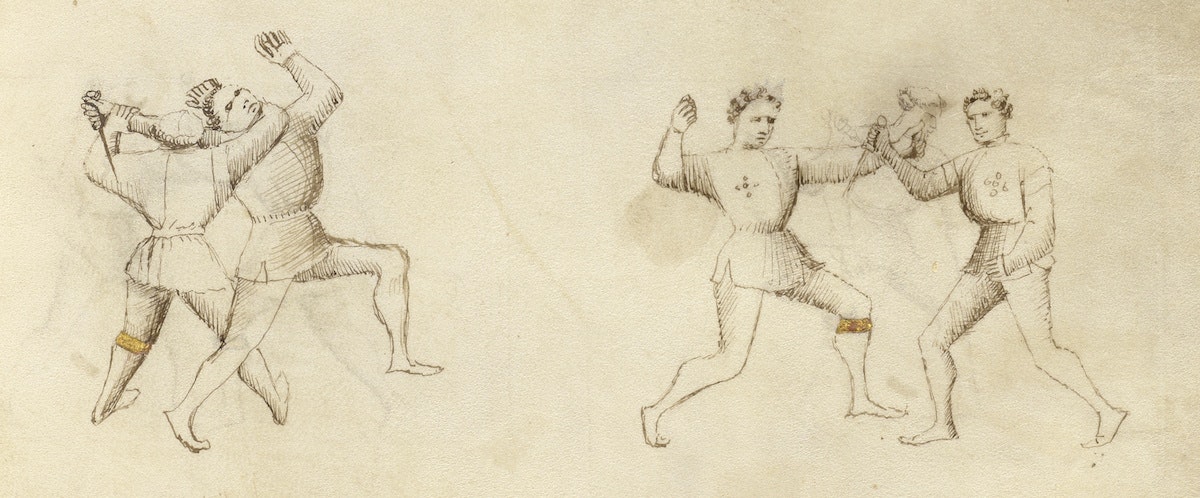
The Flower of Battle: Italian Fighting Manual (ca. 1410)
Much as a denizen of the 21st century might turn to YouTube demonstrations or tailored smartphone apps in order to learn or hone certain skills, so the autodidact of the Medieval and Renaissance period would have turned to how-to-guides such as this fine example from early 15th-century Italy — Il Fior di Battaglia (The Flower of Battle). From The Getty, where the one of the copies is held:
This manuscript by the greatest fencing-master of the late 1300s, Fiore Furlan dei Liberi da Premariacco, instructs the reader in the intricacies of combat. Lively illustrations of charging horses and armored knights accompany the text. Through words and pictures, the manuscript teaches a variety of fighting techniques including single combat on foot with sword, dagger, and ax, and also mounted combat in all its variations. Nicolò III d'Este, ruler of Ferrara, ordered at least three copies of this text, including this one. Nicolò's interest in such a manual was quite natural, since fighting played an important role in the education of young nobleman, and he himself was raising three sons.
As noted above there are a few different versions of this work, Wikipedia offering an impressively detailed account of each (as well as of the life of Fiore Furlan dei Liberi da Premariacco). Here's what it has to say about the code of gold crown and garter seen throughout.
The format of instruction is largely consistent across all copies of the treatise. Each section begins with a group of Masters (or Teachers), figures in golden crowns who each demonstrate a particular guard for use with their weapon. These are followed by a master called "Remedio" (remedy) who demonstrates a defensive technique against some basic attack (usually how to use one of the listed guards to defend), and then by his various Scholars (or Students), figures wearing golden garters on their legs who demonstrate iterations and variations of this remedy. After the scholars there is typically a master called "Contrario" (counter), wearing both crown and garter, who demonstrates how to counter the master's remedy (and those of his scholars), who is likewise sometimes followed by his own scholars in garters. In rare cases, a fourth type of master appears called "Contra-Contrario" (counter-counter), who likewise wears the crown and garter and demonstrates how to defeat the master's counter. Some sections feature multiple master remedies or master counters, while some have only one. There are also many cases in which an image in one manuscript will only feature a scholar's garter where the corresponding image in another also includes a master's crown. Depending on the instance, this may either be intentional or merely an error in the art.
Below are some selected highlights from the Getty's 80+ page version, including the lovely final page. Appearing after the last section on mounted combat, we are shown two horses, in a closing moment of calm, tethered quietly to a tree.
More detailed information on Fiore Furlan dei Liberi's work can be found here on this dedicated site, including an English translation of the text found in this Getty version.
Jun 1, 2017









